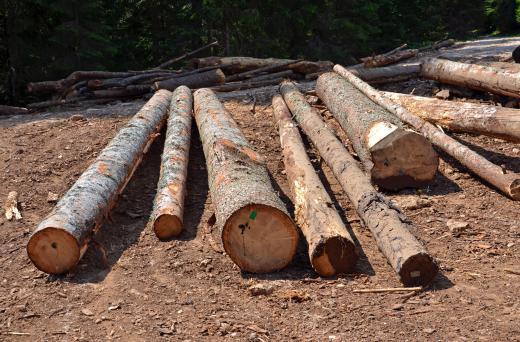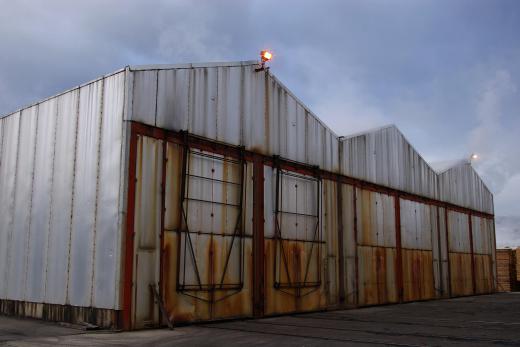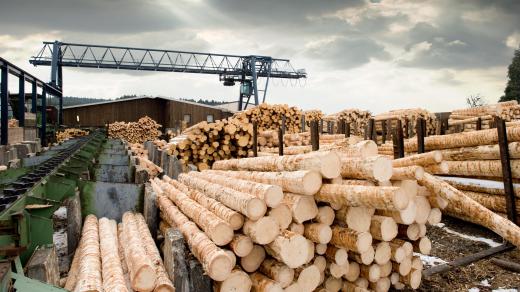A sawmill is a facility which processes raw timber into dimensional lumber for shipping and eventual sale. Prior to the development of the sawmill, people harvested timber and cut the resulting logs into planks by hand, an often painstaking process. Sawmills centralized timber processing in the 1600s, allowing a high volume of timber to be processed at a central location, which was initially powered by water and later by steam and electricity. Modern high-volume saw mills are dramatically different from 17th century sawmills, with highly automated systems which rely heavily on computers.
Before being processed, lumber must be graded and sorted. Sometimes this is done on the site of a timber harvest, and at other times grading is handled at the sawmill itself. After grading, logs are debarked and then run through the head saw, also known as the primary rig. The head saw roughly splits the lumber into boards, which are finished with trimming, drying, and planing to ensure that they are evenly cut pieces of lumber. Once the lumber has fully dried, it can be packaged for shipping or stored on-site at the saw mill until there is a demand for it. Waste products like sawdust and woodchips may be pulped for papermaking, or burned to generate power.

Working at a sawmill can be dangerous, especially if the sawmill handles a high volume of timber. A number of different types of saws are used, along with other heavy equipment, and workers can easily injure themselves, especially along the green chain, the system of conveyor belts which runs through a sawmill to carry timber and lumber as it is finished. In more modernized sawmills, operations along the green chain are handled by computer programs which are capable of recognizing various types of timber and routing them correctly.

At smaller sawmills, a much smaller volume of timber is handled, and employees are generally not as rushed. Small sawmills may belong to small logging companies, but they might also agree to handle milling for individual citizens. People can also rent or purchase portable sawmills for work on their land. For example, someone who wants to build a cabin with boards from his or her property could rent a sawmill to handle the timber harvesting and processing on the land, making it much less expensive.

Many old sawmills are located near rivers, because the water was used to float logs downstream from logging sites. The tradition of using water to move logs around endures in many sawmills, some of which establish artificial waterways on site to move unfinished timber. Some sawmills have also improved their environmental record, focusing on utilizing a high percentage of the total volume of rough logs that they bring in, and finding efficient and environmentally friendly ways to handle the inevitable waste of the milling process.
Ever since she began contributing to the site several years ago, Mary has embraced the exciting challenge of being a About Mechanics researcher and writer. Mary has a liberal arts degree from Goddard College and spends her free time reading, cooking, and exploring the great outdoors.

